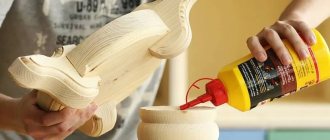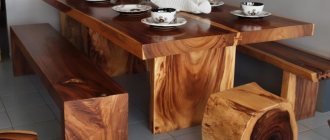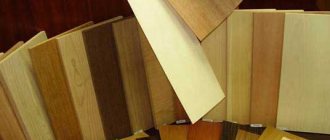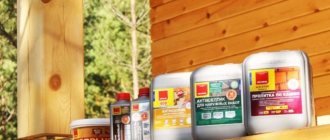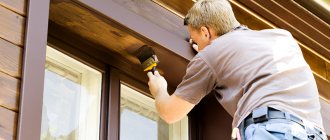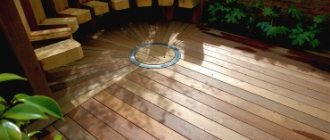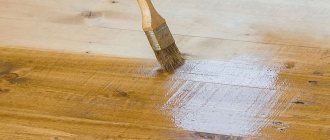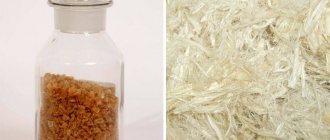In everyday practice, you need reliable wood glue - wood and all kinds of products made from it must stick tightly. The promises on the label do not always live up to expectations when making and repairing furniture. Before gluing wood, it is important to clarify what compositions exist and find out their characteristics, so as not to spoil a good product.
Necessary properties of glue
In everyday life, questions arise about how to properly glue wood, is it necessary to additionally tighten it with bolts or fasten it with self-tapping screws? Without knowing the types of adhesives, you should not purchase any glue that mentions “wood” on the label.
High-quality and strong wood glue will help you assemble the product without screws, following the technology. Since ancient times, tongue and groove joints and tight groove joints have been used. Churches and towers were built without nails.
Today, combined methods of wood construction are used, including self-tapping screws and good wood glue. High quality has the following properties:
- Resistance to temperature amplitudes;
- Moisture resistance;
- Viscosity and plasticity;
- The absence of harmful components that will evaporate over a long period of time (like some varnishes for outdoor use);
- After polymerization, have plasticity (wood is a living material);
- Ease of use;
- Resistance to third-party solvents, chemical reagents, caustic environments;
- Long guaranteed service life of the product;
- Affordable price.
Each variety differs in composition and method of application, so professional carpenters are very picky when choosing glue.
Before purchasing, carefully study the specified criteria - there is no point in overpaying for unclaimed properties.
High-quality and strong wood glue will help you assemble the product without screws, following the technology.
Colorless wood glue is convenient for working with colored layers of different types of wood. The compositions differ in the density of the compound (calculated in g/cm³). This indicator is affected by the thickness of the adhesive mass.
There are different types of compositions, depending on the mixing method and drying time:
- One-component adhesive for gluing wood to wood;
- Two-component (2 reagents react when mixed) compositions;
- Polymer formulas.
Most types are produced in finished form, an example is PVA wood glue. It must be shaken (there is a separation of the suspension into components) or diluted with water if it thickens when stored in unsuitable conditions.
A one-component “superglue” with a complex formula hardens upon contact with air - it is important to work quickly and carefully. Other formulations add a binder component to achieve maximum tenacity.
Fast-drying wood glue can be highly toxic. This option is not suitable for furniture in a children's room or the bedroom of a person with allergies.
Colorless wood glue is convenient for working with colored layers of different types of wood.
Video description
What EDP epoxy glue is is described in more detail in the video:
- SOUDAL 66A products deserve special attention . It is universal and suitable for absolutely any surface. Indispensable in the manufacture of garden furniture and facade work. But you need to know how to work with it, as it expands when it dries.
- Kleiberit 303 .0 is suitable for working with any wood (even the densest) and with all types of wood-containing materials. Characterized by quick setting and reliable seam.
- Glue such as Moment Joiner has an expanded scope of application. Characterized by a particularly strong connection of surfaces. It takes on the color of wood, so we recommend it for working with light varieties. The glue does not contain toxic substances and is environmentally friendly. Characterized by fast setting, resistance to moisture and critical temperatures. With all this, it has a relatively low cost.
Moment Joiner is available in different packaging Source www.bel-plast.com
Artelit WB-330 glue has similar characteristics . But, it has an assigned water resistance class - D300. Not flammable. Upon contact with open fire and under the influence of critical temperatures, they will not release toxic substances.
How long does it take for glue to dry?
GOST 17005–82 standards are carefully thought out for all glue groups. They regulate the class of the composition, according to its physical and mechanical qualities. Each variety has its own application technology and drying time for the composition. Often, novice carpenters and carpenters are a little disoriented by this diversity.
In order not to get confused with the technology, novice craftsmen use the instructions on the packaging of glue for wooden structures. There are four resistance groups, differing in bond strength and degree of moisture resistance. For high-quality gluing, it is important that the selected composition meets the basic operational requirements.
The gluing time for all compositions is different - from 2 hours to 24 hours (indicated in the instructions). If the parts are kept under pressure in a room with optimal temperature and humidity, the holding time can be reduced.
You should not subject the product to increased load for the first 2-3 days, since polymerization and slight absorption of moisture from the glue are still ongoing. PVA wood glue is an ideal product for working at home; drying takes about 24 hours.
The gluing time for all compositions is different - from 2 hours to 24 hours.
What is better to use for gluing?
Today there are many adhesive materials that are used for carpentry needs:
- polyurethane compounds;
- contact glue;
- various types of PVA glues;
- epoxy resin.
Each master always has several of the presented substances in stock. So, how do you glue wood to wood? The appropriate option is chosen, paying attention to certain features of the future project:
- wood features;
- the conditions under which the product will be used;
- the degree of load that will fall on the seam.
Wood gluing technology
Before starting work, it is recommended to stock up on all the necessary tools and protective equipment. Overalls, goggles and a respirator will protect the respiratory tract from harmful fumes, glue residues and wood dust.
Any wood glue will give excellent results if the surface is carefully leveled. Well-dried wood is sanded with fine sandpaper, cleaned of dust, and then degreased.
Wood of different types is glued together approximately the same way:
- The parts must be positioned horizontally so that the mass does not flow to one side. The glue is applied in a zigzag pattern to spread it freely over the surfaces;
- Working with two-component compositions is no different from other adhesive mixtures, only the base is applied to one contact wooden surface, the hardener is applied to the other;
- For better adhesion, wood glue is applied in a double layer, allowing the initial impregnation to dry a little. Next, these parts are connected and pressed tightly to enhance adhesion strength;
- When gluing, excess composition appears on the seams; they cannot be left until polymerization. In liquid form, the glue is much easier to remove. Depending on the density, the excess is cut off with a knife, removed with a sponge with a solvent, or wiped with a rag.
Any wood glue will give excellent results if the surface is carefully leveled.
Do I need to degrease surfaces?
Most offers on the consumables market are marked “Clean and degrease the surface.” Compliance with standards is the best prevention of poor-quality connections. It is important not only how to properly clean, but also how to degrease the surface. The main problem is to completely remove grease stains and resin pockets from coniferous wood.
Removing oily stains from wood is done with a soft cloth soaked in a suitable solvent. Mechanical cleaning and sanding with fine sandpaper of the area prepared for gluing wood is often required.
Removing oily stains from wood is done with a soft cloth soaked in a suitable solvent.
Do clamps guarantee high-quality grip?
The strength of the connection directly depends on the accuracy of the fit of the parts and the quality of their processing with glue. The amount of clamping force is practically unimportant here, so it is not necessary to tighten the clamps too much. A sign of good clamping pressure is a small amount of glue showing through.
Experts rarely use clamps. Woodworkers who make small items use tape or masking tape to secure them together. With well-fitted joints this is enough.
How to clean a surface from dried glue
Compliance with the technology guarantees strong bonding, but often smudges and sagging remain on the seams after drying under pressure. If you do not remove it in time, it will ruin the aesthetic appearance of the product.
The simplest household methods:
- Soak with acetone (varnish/varnish liquid) and sand;
- Use the “anti-glue” composition to soften the sagging;
- Heat the “Superglue Moment” with a hairdryer and scrape it off with a knife;
- Carefully remove rough stains with any cutter;
- Moisten a piece of rag with white spirit and wipe the contaminated area.
Among household solvents that can be used to remove PVA wood glue, medical alcohol, gasoline and acetic acid are well known. Carpenters do not use such methods. They have at their disposal special solvents, acids, and components for mixing compositions. They are also suitable for cleaning seams with exposed adhesive.
Among household solvents that can be used to remove PVA wood glue, medical alcohol, gasoline and acetic acid are well known.
Each wood glue has its own characteristics. Some compounds are not suitable for light-colored wood layers. Others will be optimal for layer-by-layer gluing or applying thin veneer to a furniture panel. When working with each of them, it is important to be aware of the “pros” and “cons”, to work carefully, avoiding contamination and rough deposits.
Polyurethane adhesives
Polyurethane is a substance from the group of polymers, which belongs to synthetic elastomers and is used in various industries due to its wide range of characteristics and increased strength. The mechanical properties of polyurethane-based adhesive allow it to be used under conditions of increased force (for example, for gluing wooden support elements), as well as at high temperatures, high humidity and other aggressive conditions.
Before applying polyurethane glue, the surfaces must be cleaned of grease and dirt, and also moistened a little with water so that the composition hardens faster. The time to achieve maximum fixation strength is about 15 minutes; complete adhesion requires approximately 3 hours.
Axton
Cost – 1515 rubles per 4 kg.
This is a specialized building composition in the form of a dry mixture, intended for laying parquet boards made of wood of any type. The base can be a concrete screed or self-leveling floor; if necessary, parquet can be laid using this glue on heated floors. To use, the glue must be mixed according to the instructions (it consists of two components) so that it takes on a paste-like consistency. Like other types of polyurethane adhesives, Axton glue is resistant to high and low temperatures, and the complete drying time is 1 hour (despite the fact that on the packaging this figure is half as long - 20-30 minutes).
Axton
pros
- suitable for any type of base, including concrete screed and heated floors;
- high fixation strength;
- does not deform under the influence of moisture;
- the composition is resistant to frost and high temperatures;
- after curing, the bonded surface is resistant to mechanical stress (shake, vibration, torsion, etc.).
Minuses
- Suitable only for floor coverings (in particular parquet);
- consumption – more than 1 kg per meter of area;
- actual setting time – up to 45 minutes;
- dries completely in 1 hour, and not in 20-30 minutes, as indicated on the package;
- requires compliance with security measures.
Axton glue
Axton two-component polyurethane adhesive for parquet boards provides strong adhesion to any type of substrate, but it would be nice if the manufacturer indicated real information on the packaging.
Wood max
Cost – 458 rubles for 70 ml.
Wood max is a new generation of professional wood glue based on MS polymer. MS polymers were first introduced to the Japanese market, but today hybrids of polyurethane and silicone are widely used by many manufacturers of premium adhesives and sealants.
Wood max glue firmly glues materials of any hardness, regardless of their porosity, does not form foam and does not shrink. Like most polyurethane-based compounds, it is suitable for outdoor work, provided that the materials being processed are protected by an awning or canopy. The adhesive is resistant to moisture or condensation, thermally stable over a wide temperature range, and innovative SMP technology provides resistance to various mechanical influences: twisting, squeezing, shaking and vibration. Setting time is about half an hour.
Wood max
pros
- very high bonding strength of any elements made of wood, cardboard, upholstery fabrics and paper;
- suitable for wood of any species;
- can be used for outdoor work provided that a canopy is used;
- does not form foam;
- does not darken or shrink;
- retains its physical and chemical properties over a wide temperature range;
- the adhesive seam does not deform under any mechanical loads;
- glues porous substrates well;
- does not require compliance with specific safety measures.
Minuses
- takes a long time to set - about 30 minutes;
- hardening time of at least 24 hours;
- high price for such volume;
- high consumption (approximately 200 g/m2);
- It works using gradual setting technology, that is, it involves the use of auxiliary tools.
Wood max glue
Despite a fairly large number of disadvantages, we recommend this glue for all types of carpentry work, as it has an ultra-high degree of surface adhesion and allows you to glue elements of any hardness and porosity, unlike standard polyurethane compounds.
Soudal D4
Cost – 266 rubles per 250 g.
Belgian polyurethane-based adhesive Soudal D4 is suitable for horizontal or vertical gluing of natural wood elements for interior or exterior work. The heat resistance of the product ranges from -40°C to +100°C, and the color palette is presented not only in the classic yellow, but also in a golden shade, relevant for decorative elements, such as signs and signs. The composition is resistant to short-term exposure to liquids, condensation or elevated temperatures, so it is recommended to use it for elements that will later be installed under a canopy (if we are talking about outdoor conditions). The glued surfaces are subsequently suitable for coating with varnish or paint.
Soudal D4
pros
- firmly glues any type of wood, including wet wood (no pre-drying required);
- the seams do not unravel;
- completely “indifferent” to moisture;
- suitable for outdoor use;
- if necessary, very firmly fixes wooden elements to other types of surfaces, for example, stone, concrete or brick;
- does not freeze at sub-zero temperatures;
- the adhesive seam does not deform when exposed to increased force loads;
- setting time is about 15 minutes.
Minuses
- at very high temperatures, the seams may darken;
- long exposure time (at least 24 hours);
- difficult to remove from clothing or surfaces;
- careful pressing is necessary.
Soudal D4 glue
Soudal D4 polyurethane adhesive is, in fact, polyurethane foam without a foaming agent. It very firmly glues surfaces made of wood of any species, does not freeze in frost and is absolutely resistant to moisture. The described disadvantages cannot be called significant disadvantages, since they are common to all polyurethane-based adhesive compositions.
Note! If you use polyurethane adhesive for interior work, take care of good ventilation and use a protective respirator, as this composition is toxic and can be hazardous to health.
Once again about processing
It is important to remember about the environmental friendliness of laminated materials and structures not only at the stages of production and operation, but also when a laminated wood product completes its life cycle. The best-case scenario in terms of environmental impact is the recycling of wood products for secondary use. Unfortunately, in our country it is still associated with a lot of difficulties.
This was clearly demonstrated by the experience of implementing the “New Life of an Old Cabinet” project, which was organized by the Association of Furniture and Woodworking Industry Enterprises of Russia (AMDPR). IKEA also became its participants - today they are the only players in the Russian woodworking market that offer services for collecting old furniture for its subsequent processing.
Of course, this is negligible. But even if there were more processing capacities, this is not enough for success - active involvement in the chain of government bodies and the population is necessary. To make it interesting for citizens to support the wood products processing cycle, collection points and competent logistics are needed. So far, the Russian timber industry cannot boast of this.
“Companies themselves are engaged in establishing logistics chains for the supply of recycled wood and used furniture. That is, the IKEA and Kronospan projects are, by and large, an internal corporate initiative, which can hardly be extended as an algorithm to the Russian Federation as a whole. This is still a big problem in our country,” noted AMDPR General Director Timur Irtuganov at the Woodindex-2020 online conference “Investments in the timber industry and pulp and paper mills: growth points and development directions.”
In addition, serious limiting factors in the development of recycling of wooden products are the lack of a legislative framework on this topic, as well as the lack of specialized equipment and investments for its acquisition.
Conclusion
Thus, we can conclude that three main methods are used to attach wood to concrete: gluing using special glue, gluing to polyurethane foam, using anchor bolts or dowel-nails. If an adhesive is used, wood and concrete must first be prepared, paying special attention to priming the concrete monolith and removing dust from both compounds.
When connecting wood and concrete with special metal fasteners, there is no need to pre-treat the materials.
Useful tips
Working with any type of glue requires careful cleaning of the surface from dust and dirt. Before gluing the parts, it is necessary to remove old paint or varnish from them and treat the base with sandpaper. If the surface is too porous, it can be pre-coated with a primer.
Apply the composition with a small brush, evenly distributing it over the surface in a layer of no more than 2 mm. Almost every adhesive has an open time, which allows you to avoid massive protrusion of the material beyond the surfaces being glued. In particular, after applying PVA-based wood glue, you need to wait 6-10 minutes and only then connect the parts to each other.
Fastening using dowels
Dowels can also be used to connect materials. This type of fastening is relevant where it is necessary to ensure high rigidity and strength of fixation, which glue is often not capable of. Metal dowels that can withstand high mechanical loads are suitable for fastening wood to concrete.
Dowel-nails and anchor bolts are often used, which, after hitting the concrete due to a special design, are securely fixed in it (the internal working part of the fastener begins to expand, which does not allow it to wobble or be torn out under the influence of load).
It's worth knowing the difference between drying and curing
Manufacturers usually provide precise directions regarding drying time , so it is always important to read the product label and follow the instructions carefully to achieve the best result possible. However, the terms drying and curing can sometimes lead to confusion. So let us make it clear to you.
Drying usually means that the surface of the adhesive is dry to the touch and the joint is secure enough to remove the clamps. However, this does not mean that everything is ready. Usually the chemical reaction is still ongoing. Only after the curing time has passed is it safe to apply the finish or use the finished project.
